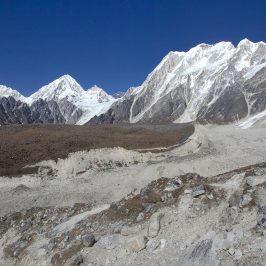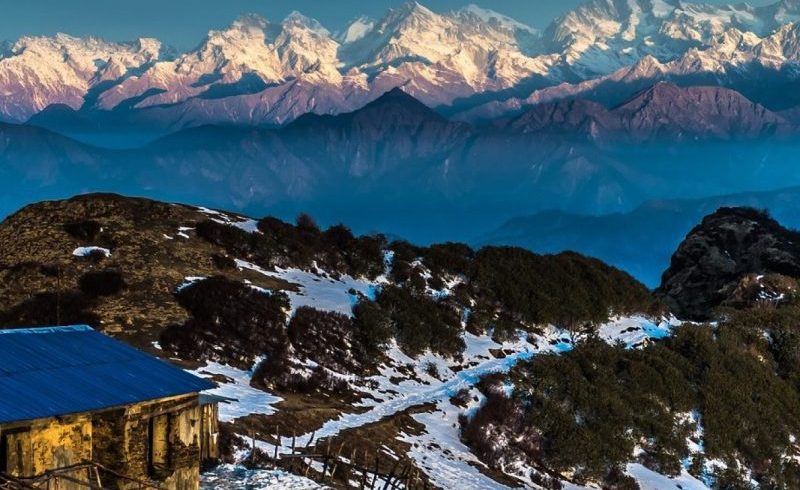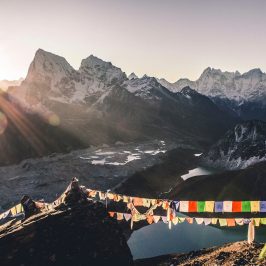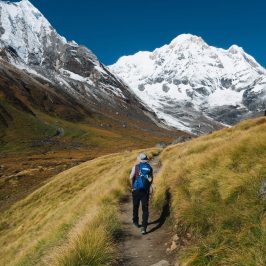Manaslu Trek – Discover Nepal’s rich cultural richness. The Manaslu Trek takes you off the main route and onto a less-traveled trail. Discover interesting mountain civilizations on the verge of extinction as you walk through the gorgeous Budi Gandaki and Nubri Valleys. Learn about Bon, an ancient Tibetan religion that predates Buddhism, while visiting old Buddhist monasteries.
The Manaslu Trek (also known as the Manaslu circuit) brings you to some of Nepal’s most remote and least explored areas. This path is less crowded than the renowned Everest and Annapurna trekking trails since just a few hikers utilize it. Your Manaslu Trek begins in the lush and verdant Budi Gandaki Valley and ascends to the Nubri Valley. The Nubri Valley is, nestled in the shadows of Manaslu (8,163 meters/26781 feet), the world’s eighth-highest peak. You’ll be walking through the district of Gorkha, which has great historical significance in Nepal. From this hilly area, a Shah ruler began the unification of Nepal. Gorkha is the royal seat of Nepal’s Shah Monarchs, a family that had controlled the country for almost 200 years. This dynasty also produced Nepal’s final ruler.
Trek Overview
The Manaslu Trek starts at Gorkha’s Barpak, a tiny highland settlement. Join the trek with mule and yak caravans as you walk along small pathways cut into rock faces. Explore the Manaslu Conservation Area Project, a veritable treasure trove of Himalayan animals and vegetation. Cross rumbling glacial rivers, waterfalls, traditional villages, and pine woods on your way to your destination. The route leads to the high-altitude communities closer to the Tibetan border, people in these communities have continued following the same traditions and lifestyles as their forefathers, little affected by modernization.
You’ll travel along the Himalayan salt route, an ancient trading route frequented used by Nepalese, Tibetan, and Indian traders in the past. The hard passage of Larkya La (5,160 meters/ 16929 feet), a high mountain pass, is one of the trek’s highlights. A short trek to Dharapani in Marshyangdi Valley brings your adventure to an end, you should appreciate yourself and be proud of your accomplishment once you have completed your trek. In under two weeks, you’ll be walking across three Himalayan valleys: Budi Gandaki, Nubri, and Marshyangdi.
Travel Insurance:
Travel insurance is required for all clients engaging in any activity. We strongly urge you to obtain a complete insurance plan from reputable insurance.
Passport and Visa:
Every client must have a valid passport from the return date with a 6-month prior validity by the Nepalese consulate in your country or the immigration office at Tribhuvan International Airport in Kathmandu.
Equipment list:
- Daypack above 40 liters. (Must be waterproof)
- Down jacket (rental available)
- Warm sleeping bag (rental available)
- Sun head, gulf cap, sunglasses
- Headlamp, torchlight, power bank, and extra batteries
- Ear-muffs, sun Lotions/sun cream, wet wipes, and hand sanitizer.
- Pair of liner gloves thin wool and synthetic.
- Cotton t-shirts, Synthetic t-shirts.
- Long-sleeve polyester or synthetic lightweight for sunny days.
- Soft-shell jacket water & wind resist.
- Swimming costume.
- Inner clothes as your requirement.
- Liner socks, woolen socks.
- Proper trekking boots with good ankle support.
- Imodium or Pepto Bismo capsules for upset stomach or diarrhea.
- Diamox for altitude sickness. The guide will help you to take it.
- One small personal-sized first-aid kit with blister treatments such as moleskin, bands, anti-infection ointments, muscle relief ointments




